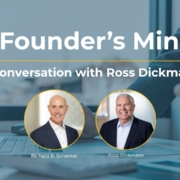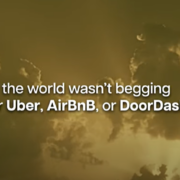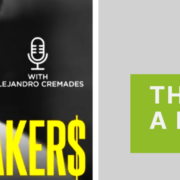Today is a great day for Phoenix3 Holdings. I am proud to announce the debut of Restaura, a dining management services company exclusively serving senior living and active adult communities. We named Phoenix3 after the mythical phoenix, symbolizing renewal, hope, and better things to come, which is precisely my vision for Restaura.
Restaura represents everything that dining services must become to meet the high expectations of today’s aging Baby Boomers as they consider their retirement living choices. Our rapidly growing aging population today spends $7.6 trillion (with a “t”) annually and considers food and nutrition the number one factor affecting their overall health and well-being. Yet somehow, the $45.1 billion foodservice contracting industry has failed to evolve to capitalize on this “silver platter” business opportunity.
From where I sit, with a founder’s mindset and decades of industry experience, I believe the time is right to fill a void in the marketplace. Restaura is built to serve a new generation that expects the same variety, choice, and access in an active aging or senior living community that they have grown accustomed to in their home community. We are on a mission to establish new standards of excellence that are measured every step of the way and, importantly, will not be compromised.
Grounded and Co-Founded
One thing I’ve learned over the years is that no matter how brilliant your idea is, the complexity of scaling a business requires expertise, teamwork, and shared commitment. And so, for the first time in my career, I made the decision to select a co-founder for Restaura and feel incredibly fortunate to announce Joe Cuticelli as co-founder and Chief Executive Officer. Joe and I met many years ago when he was CEO of Sodexo Senior Living at Sodexo, and we developed a mutual respect grounded in our aligned leadership philosophy. In addition to his incredible industry expertise, Joe is driven to give back, both as a mentor to past and current colleagues and as Board Chair for a wonderful organization called Generations United.
Joe and I spent the last year reimagining what dining services should be and building a new industry solution from scratch that specifically addresses the market needs from the client and resident perspective. Given our shared passion for the value of a people-first culture, we started by inviting some of the best and brightest functional experts to join us. Quite frankly, I have been humbled by the talent level and character of the individuals who now comprise the Restaura executive team. You won’t find a better corporate team anywhere in our industry. They are passionate, driven, bright, and have found a way to make this hard work fun!
To Make a Difference, You’ve Got to Own It
We all knew that regardless of a solid business plan, groundbreaking culinary offering, or great marketing, only the front-line associates could truly bring the Restaura experience we envision to life. In this business, it’s the sous chefs and servers, the nutritionists and dining room managers who have always been the key ingredient to success. We thought long and hard about the employee retention issues that senior living community operators face — often as much as 65 percent turnover annually. And we boldly decided to become an employee-owned company that grants each and every Restaura employee an ownership stake in the company.
I have set aside more than 30 percent of the equity shares in Restaura for our employees so that every team member has a personal interest in the company’s success. We are confident that this employee ownership model will empower our team to exceed expectations and will make them feel valued in a way that most of them likely have never experienced before in their career. This is a first for our industry and something our competitors cannot easily replicate.
To bring this transformative culture to life, we enlisted the help of Ownership Works, a nonprofit founded by Peter Stavros, co-head of Global Private Equity at KKR, to advance the employee ownership movement in corporate America. Peter is world renowned for his decades of work on the ROI of an ownership culture, which creates a different level of accountability, where employees are more engaged and less likely to quit. By 2030, Ownership Works aims to generate at least $20 billion in wealth for workers and create hundreds of thousands of new employee-owners. I am proud that Restaura is the first contract food and dining management services organization to join Stravros’ movement.
Technology on the Front Burner
The benefit of being an agile start-up is the opportunity to reimagine all the “what ifs.” It’s been more than two decades since I started a venture from scratch, and there are infinitely more tools available to embed technology into every facet of dining services. We spent the last year challenging the status quo to optimize client success, resident experiences, and operational efficiencies.
The result is truly game-changing. We’ve developed tools that automate highly personalized meal plans based on preferences and resident health profiles. Our sourcing solutions deliver a new level of predictive demand planning to minimize waste and maximize freshness. We’ve leveraged the power of AI to create sentiment analysis tools that provide real-time insights by analyzing resident comments, ratings, and team member inputs to identify opportunities for improvement and respond to trends in real time.
One of the outcomes of all this work that I am most excited to share is how we’ve brought it all together for our clients. Restaura i-Cubed is a performance dashboard that integrates traditionally disparate KPIs for our clients to streamline operations, view real-time resident sentiment, and provide important financial updates. With dining representing up to 20 percent of an active adult or senior living community’s operating budget, this is a game-changing solution whose time has come. We’ll be at Leading Age in Nashville later this month, demonstrating our technology solutions, so please spread the word and stop by our booth to learn more.
Our Name Says It All
The Restaura name evokes a sense of culinary excellence and high-end service that is desperately missing from active aging and senior living dining today. It’s well known in the industry that food and dining are often the deciding factors in attracting and retaining residents. The incoming wave of seniors has higher expectations, more eclectic tastes, and a genuine appreciation for the impact of food on their health and well-being.
We took the time to study and reimagine culinary, so it replicates the lifestyle residents enjoy at home. Our research found that variety in meal options that cater to individual tastes and preferences is the single most important factor when older adults are choosing how they dine today (68%), yet only 17% of the 1,500 seniors we surveyed were confident variety would be accommodated in a senior living community. Again, my founder’s mindset saw huge opportunity here.
So, we brought in a distinguished culinary team to deconstruct the norms of senior living dining and deliver a level of choice and personalization previously unavailable. With Restaura, mealtimes will encompass curated menus, in-room dining options, flexible scheduling, and concierge-style personalized service. Our culinary philosophy revolves around four core tenants:
Unapologetically delicious
Responsibly sourced
Scratch made
Nutritionally balanced
Make no mistake, my commitment to quality, scratch cooking has been at the core of my approach to this industry for decades. The Restaura difference is the ability to couple scratch cooking with technology and operations systems also built from scratch and a transformative employee ownership culture.
It is said that great moments are born from great opportunity. I see tremendous opportunity for Restaura with the 85% of the market currently not outsourcing as well as those building the future of senior living. They know how important dining is to resident acquisition and retention, yet they have not found a compelling outsourced solution—until now. Like the phoenix, Restaura is renewal, hope, and a symbol of better things to come.
If you’d like to take this journey with us, I invite you to reach out to me or visit www.restaura.com to learn more and explore our career opportunities.
Warm Regards,
Richard B. Schenkel
Founder & Executive Chairman













